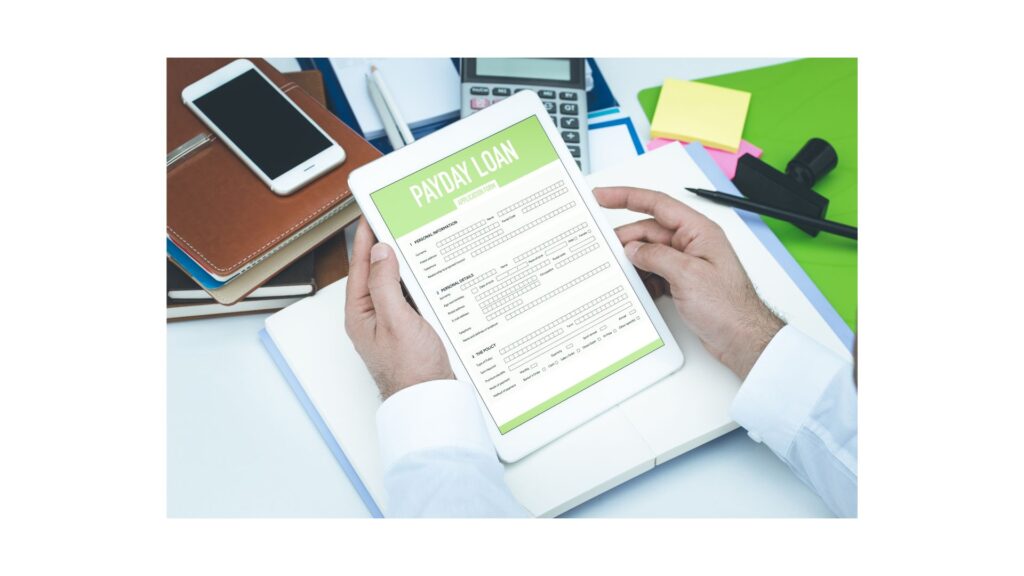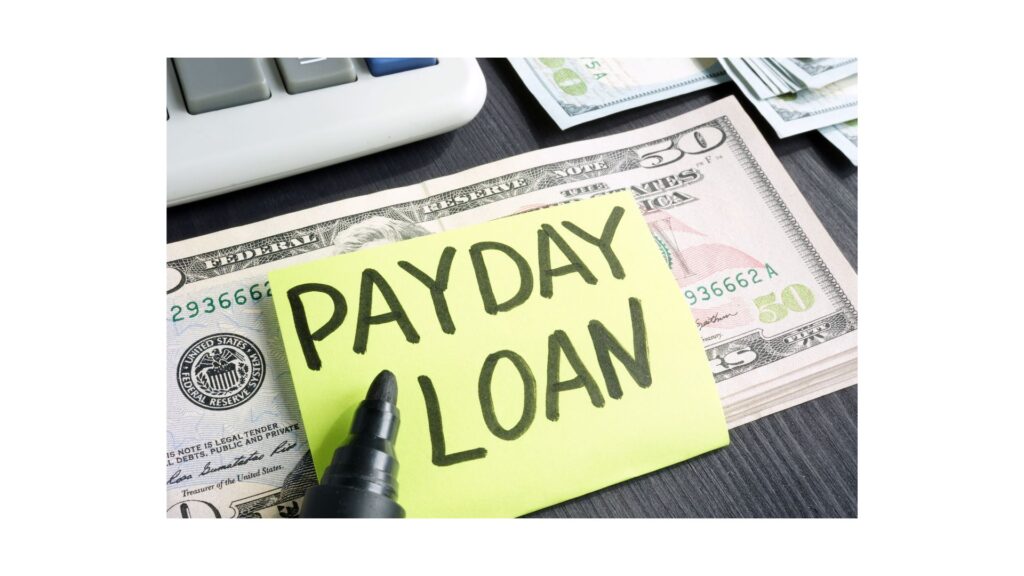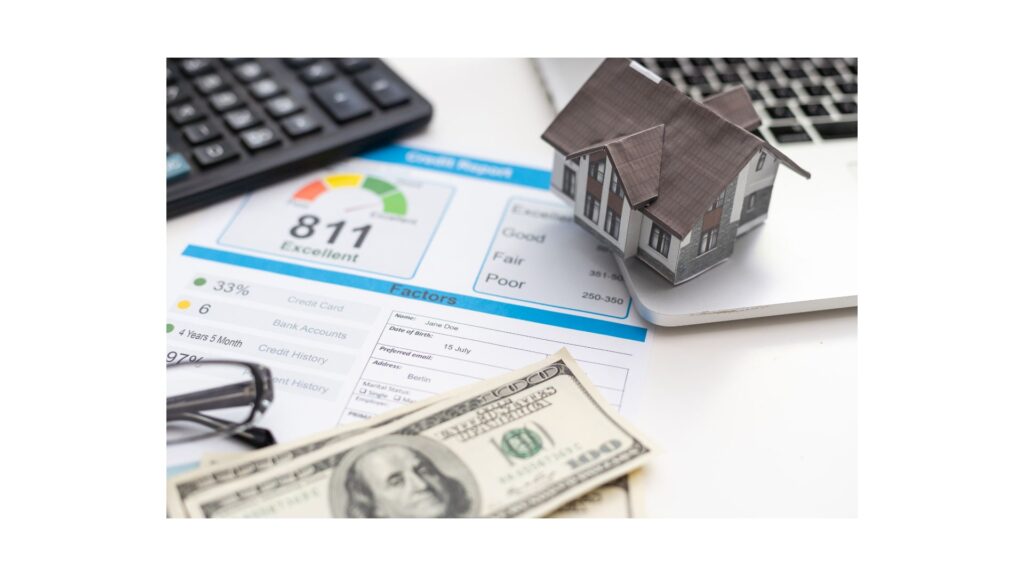Effective Budgeting Techniques to Manage Loan Repayment Successfully
How to Create a Practical and Realistic Budget

Understanding your income and expenses is vital for mastering the art of budgeting, particularly when dealing with the pressures of payday loans. A well-structured and realistic budget empowers you to allocate funds strategically towards loan repayment. Begin by meticulously tracking all your income sources, which may encompass a primary salary, freelance gigs, or various benefits. After this, categorize your expenses into fixed costs, such as rent or utilities, and variable costs like groceries or entertainment. This thorough analysis not only highlights your spending habits but also allows you to make necessary adjustments to improve your financial standing.
To develop this budget effectively, adhere to these critical steps:
- Compile a comprehensive list of all income sources and their corresponding amounts.
- Detail your monthly fixed expenses exhaustively.
- Estimate variable expenses based on historical spending patterns.
- Subtract total expenses from total income to ascertain the available funds for loan repayment.
A meticulously crafted budget serves as your roadmap to achieving financial stability, equipping you to prioritize loan payments and prevent falling deeper into debt.
How to Identify and Cut Unnecessary Expenses
Recognizing and eliminating areas where you can cut back on spending is essential for freeing up additional funds for making timely loan payments. Many individuals unwittingly spend on non-essential items that can be curtailed to enhance their debt repayment capabilities. By closely examining your spending habits, you can identify opportunities for savings that will directly bolster your repayment efforts.
Common unnecessary expenses that can be trimmed include:
- Subscription services (e.g., streaming platforms, magazines).
- Dining out or ordering takeout.
- Cable TV packages.
- Impulse purchases.
- Excessive shopping for clothing or gadgets.
- Unused gym memberships.
- High-cost coffee or snacks.
Reducing or eliminating these expenditures can significantly enhance your cash flow, allowing you to address payday loans with greater urgency and effectiveness.
How Budgeting Apps Can Transform Your Financial Management
Utilizing budgeting apps can revolutionize the way you track your spending and set achievable savings goals. These digital solutions provide critical insights into your financial behaviors and help you remain accountable to your budgeting strategies. Numerous users discover that adopting budgeting apps simplifies the monitoring of their finances, making it easier to understand where every dollar is allocated, thus facilitating more informed financial decisions.
Some popular budgeting apps include Mint, YNAB (You Need a Budget), and PocketGuard. Each app comes with unique features–Mint automatically syncs to your bank accounts to categorize transactions, while YNAB promotes a proactive approach by assigning every dollar a specific purpose. PocketGuard simplifies the budgeting process by showing how much disposable income you have after accounting for all bills and necessities. By leveraging these tools, you streamline your financial management and support your repayment strategy effectively.
What Should You Prioritize in Loan Payments?

It is crucial to allocate extra funds towards loans with higher interest rates, as this strategy minimizes the total interest paid over time. Prioritizing these debts can lead to significant savings in the long run. By focusing on the debts that incur the most costly interest, you accelerate your journey towards financial freedom.
Consider adopting a bi-weekly payment strategy instead of sticking with monthly payments. This approach can help you pay off the principal faster since you effectively make an additional payment each year without imposing a substantial strain on your budget. Additionally, establish a tier system: classify your loans based on interest rates and urgency, directing any surplus cash towards the highest-priority loans first. This method accelerates your debt clearance and boosts your confidence as you witness tangible results swiftly.
Expert Insights on Effective Strategies for Paying Off Payday Loans with Low Income
Which Real-World Examples Show Successful Loan Repayment?
Real-world accounts of individuals who have successfully navigated the repayment of payday loans can provide invaluable inspiration and practical strategies. Take the story of Sarah, a single mother who found herself drowning in payday loans due to an unforeseen medical emergency. By implementing a strict budgeting regime and eliminating discretionary spending like dining out and subscription services, she managed to free up an additional $200 each month.
Utilizing this extra cash flow, Sarah concentrated her efforts on her highest-interest loan, ultimately saving over $300 in interest by prioritizing that debt. By sharing her journey and the steps she undertook, others can recognize that it is indeed possible to overcome the challenges posed by payday loans, even on a low income. Effective strategies like Sarah’s can be adjusted to suit various personal situations, emphasizing the importance of tailoring financial plans to individual circumstances.
What Actionable Steps Can You Take for Managing Loan Repayment?

Taking actionable steps can significantly simplify the intricate process of loan repayment into manageable tasks. Start by assessing the total amount of your debts, along with the interest rates attached to each. Next, formulate a repayment schedule that corresponds with your income cycle, utilizing your budget to pinpoint when and how much you can afford to pay.
It’s also imperative to maintain open lines of communication with your lenders. If you find yourself unable to meet a payment, don’t hesitate to reach out and discuss potential alternatives. Additionally, contemplate consolidating smaller loans into a single payment, if feasible, to streamline your repayment process. Adapting these steps to your unique circumstances, such as variations in income or unexpected expenses, can make the repayment journey feel less overwhelming and more achievable.
What Is the Psychological Impact of Debt, and How Can You Cope?
Understanding the psychological repercussions of debt is essential for developing effective strategies to manage the stress associated with loan repayment. The weight of financial obligations can trigger anxiety, depression, and feelings of helplessness. Individuals often grapple with a sense of lost control as they juggle multiple payments, which can lead to further financial instability.
Common psychological effects of debt include heightened stress levels, impaired concentration, and strained relationships. Recognizing these emotional responses is the first step toward healing and recovery. Engaging in open dialogues with trusted friends or family members about your financial struggles can help alleviate some of this stress. Furthermore, integrating financial literacy into your daily routine can empower you to take charge of your situation, paving the way for a healthier financial mindset.
How to Increase Income to Accelerate Loan Repayment
What Are the Benefits of Finding Part-Time Work?
Exploring part-time work can be a highly effective method for generating additional income to hasten loan repayment. Flexible job opportunities are particularly appealing for individuals managing a busy schedule, allowing you to work around existing commitments. Various industries present part-time positions that cater to those on a low income, making it simpler to find a role that complements your lifestyle.
Suitable part-time positions include roles in retail, food service, or customer service. Additionally, online opportunities such as virtual assistance, freelance writing, or tutoring offer significant flexibility. Check local job boards or online platforms such as Indeed or Upwork to discover available positions. By dedicating even a few hours each week to part-time work, you can substantially increase your income and create a more effective repayment strategy.
How Can Selling Unused Items Help with Loan Repayment?
Selling items that you no longer need can provide a quick influx of cash to assist with loan repayment, serving as a practical way to declutter while simultaneously improving your financial situation. Many individuals possess valuable items lying unused at home, from electronics to clothing, which could be sold for quick cash. By utilizing online marketplaces or community garage sales, you can convert unwanted items into funds that directly support your loan repayment initiatives.
To determine the value of items you wish to sell, assess their condition and research comparable items online to gauge current market prices. Websites and apps like eBay, Facebook Marketplace, or Craigslist can provide insights into what similar items are successfully selling for. By pricing your items competitively, you increase the likelihood of a swift sale. This approach not only raises funds for loan payments but also encourages a minimalist lifestyle free from unnecessary clutter.
How to Utilize Government Assistance Programs Effectively
Government assistance programs can offer crucial financial support and resources to help manage debt, particularly for low-income individuals. Investigating available programs and understanding eligibility criteria can serve as a lifeline for those struggling to make ends meet. While offerings may vary by state, many programs include food assistance, housing support, or healthcare subsidies.
Common government assistance programs for low-income individuals include SNAP (Supplemental Nutrition Assistance Program), TANF (Temporary Assistance for Needy Families), and LIHEAP (Low-Income Home Energy Assistance Program). These programs not only alleviate monthly expenses but also free up funds that can be redirected towards loan repayment. Investigating local resources, such as community organizations or government websites, can clarify the assistance available in your area.
What Are the Advantages of Freelancing or Gig Economy Jobs?
Engaging in freelance work or taking on gig economy jobs can provide flexible income sources, helping to accelerate loan repayment. The gig economy has rapidly expanded in recent years, offering diverse opportunities for individuals with varying skills, from graphic design to dog walking. Platforms such as Fiverr, TaskRabbit, or Upwork allow users to showcase their skills and find short-term projects that fit their schedules.
Freelancing allows you to dictate your hours and workload, making it an ideal option for those juggling multiple responsibilities. Reflect on your existing skills or hobbies to identify potential income streams. For instance, if you excel at writing, consider freelance content creation. Embracing such opportunities can offer a significant boost to your income, which can then be strategically allocated towards your loan repayment efforts.
How to Negotiate Effectively with Payday Loan Lenders
What Are Your Rights as a Borrower?
Being aware of your rights as a borrower can empower you to negotiate better terms with payday loan lenders. Understanding the legal framework surrounding payday loans in your state equips you with the knowledge necessary to advocate for yourself effectively. Borrowers should be mindful of the interest rates that lenders can impose and the repayment schedules they are legally obligated to provide.
Key rights that borrowers should know include the right to receive clear information about loan terms, the right to dispute any unfair practices, and the right to seek financial counseling. Furthermore, regulations often require lenders to provide borrowers with a written statement detailing the total cost of the loan, inclusive of fees. By being informed, borrowers can approach negotiations with confidence, making it easier to secure more favorable repayment terms.
How to Request Extended Payment Plans from Lenders
Requesting extended payment plans can make monthly payments more manageable, especially for those struggling to keep pace with payday loan obligations. By reaching out to your lender and expressing concerns regarding repayment difficulties, you may be able to negotiate an extended payment plan that better aligns with your financial situation. This approach can lead to lower monthly payment amounts, thereby easing your financial stress.
When contacting lenders to request an extended payment plan, it’s essential to be polite yet assertive. Prepare to discuss your current financial situation and the rationale for your request. Providing evidence of your budget and demonstrating a commitment to repay can strengthen your case. Many lenders are willing to collaborate with borrowers who exhibit a genuine intention to fulfill their obligations, ultimately resulting in a more sustainable repayment arrangement.
What Are the Benefits of Seeking Loan Consolidation?
Loan consolidation can serve as a practical solution for merging multiple debts into a single payment, potentially lowering interest rates and simplifying the repayment process. This strategy can alleviate the burden of managing various payday loans by streamlining your financial obligations into one manageable monthly payment. However, it’s crucial to explore consolidation options carefully to ensure they align with your financial goals.
The advantages of loan consolidation include lower monthly payments and reduced interest rates, which can lead to substantial savings over time. Nevertheless, borrowers should remain vigilant about potential risks, such as extending the repayment term, which could result in paying more interest overall. Evaluating these factors and assessing your financial landscape can help you make an informed decision regarding the appropriateness of loan consolidation for your circumstances.
How Can You Prioritize Debt Repayment Effectively?
What Is the Debt Snowball Method and How Does It Work?
The debt snowball method emphasizes focusing on settling smaller debts first to build momentum and motivation. This approach is especially beneficial for individuals who feel overwhelmed by multiple financial obligations. By targeting smaller debts, borrowers can achieve quick wins, which bolster confidence and encourage sustained progress.
To implement the debt snowball method, start by listing all your debts from smallest to largest. Make minimum payments on all debts except the smallest one, to which you’ll allocate any extra funds. Once the smallest debt is eliminated, redirect those funds towards the next smallest debt, creating a snowball effect. This method not only aids in managing debts effectively but also fosters a sense of accomplishment as you wipe out debts one by one.
How to Use the Debt Avalanche Method for Financial Efficiency?
The debt avalanche method focuses on paying off debts with the highest interest rates first, which can lead to savings over time. While the debt snowball method emphasizes emotional motivation through quick wins, the debt avalanche method prioritizes financial efficiency. This approach is ideal for individuals who wish to minimize the total interest paid over the lifespan of their debts.
To implement the debt avalanche method, list your debts in order of interest rates, from highest to lowest. Make minimum payments on all debts except for the one with the highest interest rate, directing any extra funds towards that specific debt. Once the highest-interest debt is fully paid off, shift your focus to the next highest. Although this method may take longer to yield emotional rewards, it ultimately maximizes savings, making it a smart strategy for long-term financial health.
What Strategies Can Help You Balance Multiple Payday Loans?
Balancing multiple payday loans necessitates careful planning and prioritization, especially under financial strain. The key to effectively managing multiple payday loans lies in understanding your financial landscape and developing a clear strategy to address each obligation. Start by prioritizing loans based on factors like interest rates and urgency to create a repayment roadmap.
Strategies that can assist in managing multiple payday loans include creating a comprehensive debt inventory, evaluating your monthly budget to allocate funds accordingly, and considering debt consolidation options if viable. Additionally, contemplate negotiating with lenders for extended payment terms or reduced interest rates. By systematically addressing each loan and maintaining open communication with lenders, you can navigate this challenging financial situation more effectively.
Research-Backed Benefits of Strategies for Paying Off Payday Loans with Low Income
What Real-World Examples Show Successful Debt Reduction?
Real-world examples of debt reduction highlight the effectiveness of various strategies. For instance, consider the experience of a couple, Mike and Lisa, who faced daunting payday loan debts following a series of unexpected medical expenses. By implementing a combination of budgeting techniques and exploring additional income sources, they successfully reduced their collective debt by 60% within a year.
Their approach included cutting back on discretionary spending and leveraging gig economy jobs. By sharing these experiences, others can perceive the tangible benefits of taking proactive measures toward debt repayment. Moreover, analyzing such examples emphasizes the practicality of multi-faceted approaches that can be tailored to individual situations, encouraging others to take charge of their financial well-being.
What Actionable Steps Contribute to Long-Term Financial Health?
Long-term financial health encompasses more than just debt repayment; it includes building savings and enhancing credit scores. To achieve this, initiate by setting clear financial goals that extend beyond immediate debt repayment. This might entail establishing a budget for savings or investing in financial education resources. Integrating savings into your budget, even if modestly, can cultivate a habit of financial discipline that pays off over time.
For example, consider allocating a percentage of your income toward an emergency fund or a retirement account. Regularly reassess your financial goals to ensure they remain relevant and adapt as your situation evolves. By implementing these actionable steps, you can create a solid foundation for long-term financial health that minimizes the risk of falling back into debt.
What Is the Economic Impact of Debt Reduction?
Reducing personal debt can yield significant economic benefits, both at an individual level and on a broader scale. For individuals, the immediate relief of repaying payday loans leads to improved mental health and financial security. With decreased financial stress, individuals are better positioned to invest in their future, whether through education, savings, or homeownership.
On a larger scale, widespread debt reduction contributes to economic stability. When consumers carry less debt, they are more likely to engage in spending and investing, thereby driving economic growth. Additionally, lower personal debt levels can decrease reliance on government assistance programs, fostering a healthier economy overall. Recognizing these broader economic effects emphasizes the importance of effective debt management strategies.
What Are the Alternatives to Payday Loans?
How Can Personal Loans Be a Better Option?
Personal loans often provide a more manageable borrowing option compared to payday loans, typically featuring lower interest rates and more favorable repayment terms. These loans can be utilized for various purposes, including settling higher-interest debts. To qualify for a personal loan, you generally need to meet specific eligibility criteria, such as verifying your income, undergoing credit score assessments, and calculating debt-to-income ratios.
When exploring personal loans, it’s wise to research different lenders to identify the most favorable terms and rates. Consider credit unions or community banks, as these institutions often offer more competitive interest rates compared to traditional banks. Thoroughly review the loan terms and repayment schedules before committing to ensure that the personal loan aligns with your long-term financial objectives.
What Are the Advantages of Considering Credit Union Loans?
Credit unions may present more favorable loan terms compared to traditional banks, as they focus on member benefits rather than profit. These non-profit financial institutions frequently provide lower interest rates and more flexible repayment options, making them an attractive alternative for borrowers looking for relief from payday loans. Joining a credit union typically requires meeting specific membership criteria, such as residing in a particular area or being employed by designated employers.
To apply for a loan through a credit union, start by researching local credit unions to find one that meets your requirements. After becoming a member, inquire about available loan products and their terms. By taking advantage of credit union membership benefits, you can access financial products that can help facilitate smoother pathways to debt repayment.
How to Use Credit Cards Responsibly?
Credit cards can act as a short-term borrowing solution if managed responsibly. They offer a safety net for unexpected expenses or emergencies without the exorbitant interest rates commonly associated with payday loans. To prevent falling into debt with credit cards, it’s essential to pay off balances in full each month to avoid accruing interest.
Best practices for using credit cards include tracking your spending, establishing a budget, and avoiding impulsive purchases. Additionally, utilizing rewards programs can yield further benefits if managed wisely. By cultivating responsible credit card habits, borrowers can effectively leverage this financial tool while minimizing the risk of escalating debt.
What Are the Benefits of Borrowing from Friends or Family?
Borrowing from close friends or family can be an interest-free and flexible solution for overcoming financial challenges. Often, loved ones are willing to assist during difficult times, but it’s crucial to approach the situation with clear communication and respect. Setting explicit repayment terms can help maintain relationships and prevent misunderstandings.
When approaching friends or family for a loan, be direct about your circumstances and the amount needed. Discuss repayment timelines and express sincere gratitude for their support. By maintaining transparency and establishing clear expectations, you can build trust and strengthen relationships while alleviating financial burdens.
How to Utilize Employer Payday Advances Wisely?
Some employers offer advances on paychecks, providing a quick and interest-free solution to urgent financial needs. This option can prevent individuals from turning to payday loans, which often carry exorbitant interest rates. To request a payday advance from your employer, familiarize yourself with your company’s policies concerning advances.
Begin by discussing your situation with your supervisor or HR department. Clearly articulate your need for an advance and specify the amount required. Be prepared to explain how this advance will assist you in managing your finances in a responsible manner. By effectively communicating your needs, you may find that your employer is willing to lend a helping hand during your time of need.
How to Build an Emergency Fund Effectively?
What Are the Steps to Set Realistic Savings Goals?
Establishing achievable savings goals is fundamental to building an emergency fund, particularly for individuals with low income. Starting small is essential; aim to save a modest amount each month instead of overwhelming yourself with lofty objectives. This gradual approach promotes consistency and makes saving feel more attainable, ultimately contributing to your financial stability.
To determine a realistic savings goal, evaluate your monthly income and expenses, then decide on a percentage that you can comfortably set aside. For example, consider aiming to save just 5% of your monthly income initially. As you refine your budget and reduce unnecessary expenses, you can gradually increase your savings rate over time. This steady accumulation not only builds a safety net but also cultivates a habit of saving that extends beyond just the emergency fund.
How to Automate Your Savings Contributions?
Automating your savings can ensure consistent contributions to your emergency fund, making the process easier and more efficient. Setting up automatic transfers from your paycheck or checking account to your savings account helps prioritize saving without requiring ongoing effort. This hands-off approach can be particularly beneficial for individuals prone to impulse spending.
The benefits of automating savings include reducing the temptation to spend money earmarked for savings and establishing a routine that promotes financial discipline. Many banks offer automatic transfer features, allowing you to set specific amounts to be transferred regularly. By implementing automation, you can steadily build your emergency fund without added stress.
What to Do with Financial Windfalls Wisely?
Windfalls, such as tax refunds or bonuses, can significantly enhance your emergency fund if utilized wisely. While the allure to splurge on non-essentials may be strong, prioritizing savings during these financial windfalls can lead to greater long-term security. Establishing a clear plan for how to allocate these unexpected funds is crucial.
For instance, consider directing a fixed percentage of any windfall—whether 50% or 75%—toward your emergency fund. This strategy ensures that you are investing in your financial future while still allowing for a portion of the windfall to be spent on something enjoyable. Recognizing the value of these financial boosts allows you to maximize their potential, turning them into a stepping stone toward greater financial stability.
How to Choose the Right Savings Account?
Selecting a high-yield savings account for your emergency fund is essential for maximizing growth while ensuring easy access to your funds. High-yield savings accounts typically offer superior interest rates compared to traditional savings accounts, allowing your savings to grow more effectively. When selecting the right account, consider factors such as fees, accessibility, and interest rates.
Look for accounts that have no monthly fees and do not impose minimum balance requirements. Online banks often provide more competitive interest rates than brick-and-mortar banks due to lower overhead costs. Additionally, ensure that the account is insured by the FDIC, providing assurance that your funds are protected. This prudent choice in managing your emergency fund can significantly impact your overall financial health.
Why Is It Important to Maintain and Review Your Fund?
Regularly reviewing and adjusting your emergency fund is crucial to ensure that it meets your current needs. Life circumstances can shift, necessitating modifications to your savings goals. A review process allows you to evaluate your savings progress and make necessary adjustments to align with any new financial realities.
Consider reassessing your emergency fund every six months to a year. Replenish the fund after using it and account for inflation’s impact on your savings goals. By actively managing your emergency fund, you ensure that it remains a reliable safety net during times of financial uncertainty.
Proven Strategies for Paying Off Payday Loans with Low Income
What Are Real-World Examples of Successful Debt Management?
Real-world examples of effective debt management can offer practical guidance and inspiration for those facing similar challenges. For instance, consider Jessica’s story, who employed a combination of stringent budgeting, additional work, and negotiation with lenders to manage her payday loans. After pinpointing key areas of overspending, she devised a strict budget that allowed her to allocate more funds toward loan repayment.
Through diligent monitoring and adjustment of her financial habits, Jessica successfully reduced her payday loan debt within a year. Analyzing her journey provides valuable insights into methods that can be applied across various situations, reinforcing the notion that proactive financial management is essential for overcoming debt.
How to Create a Comprehensive Debt Repayment Plan?
Creating a debt repayment plan entails setting clear goals, timelines, and manageable steps to achieve financial freedom. Start by compiling a list of all debts along with their respective interest rates and monthly payments. Then, prioritize these debts based on your chosen repayment method, whether it’s the debt snowball or avalanche method.
Once you have a clear overview, establish specific timelines for your repayment objectives. Break down larger goals into smaller, actionable tasks that can be tackled incrementally. For example, aim to pay off a specific debt within a designated timeframe while consistently contributing toward your emergency fund. This structured approach can render daunting repayment processes more achievable and provide a clear path toward financial stability.
Why Is Financial Education Important for Debt Management?
Financial education is vital for managing debt and enhancing overall financial well-being. Grasping fundamental financial concepts empowers individuals to make informed decisions, craft effective budgeting strategies, and sidestep future pitfalls. By investing in financial literacy, individuals can cultivate a stronger understanding of their financial landscape, leading to improved money management skills.
Key components of effective financial education include learning about budgeting techniques, understanding interest rates, and recognizing the significance of credit scores. Numerous community organizations and online platforms offer free resources to bolster financial literacy. By prioritizing financial education, individuals can pave the way for better decision-making, ultimately leading to a more secure financial future.
Frequently Asked Questions
What are payday loans, and how do they work?
Payday loans are short-term, high-interest loans designed to cover urgent expenses until your next paycheck. They typically require repayment within a few weeks, often leading to exorbitant fees if not settled on time.
How can I avoid payday loans in the future?
To avoid payday loans, focus on building an emergency fund, creating a budget, and exploring alternatives such as personal loans or borrowing from friends and family for unexpected expenses.
What are some effective budgeting methods?
Effective budgeting methods include the zero-based budget, the 50/30/20 rule, and the envelope system. Each method possesses unique features that assist individuals in managing their finances effectively.
Can I consolidate my payday loans with a personal loan?
Yes, consolidating payday loans with a personal loan can be an effective method for reducing interest rates and simplifying payments. Ensure that the new loan offers better terms before proceeding.
What should I do if I can’t make a loan payment?
If you find yourself unable to make a loan payment, contact your lender immediately to discuss your situation. They may provide extensions or modified repayment plans to assist you in managing your obligations.
How can I improve my credit score?
Improving your credit score can be achieved by consistently paying bills on time, reducing existing debts, and avoiding new credit applications. Regularly checking your credit report for errors also aids in maintaining accuracy.
What are the long-term effects of unpaid payday loans?
Unpaid payday loans can lead to increased debt due to high-interest rates, damage your credit score, and result in legal repercussions. Overall, long-term financial health can be severely compromised.
Are there any government resources for debt relief?
Yes, various government resources exist for debt relief, including credit counseling services, debt management programs, and financial assistance through local agencies.
How can I build an emergency fund on a low income?
Building an emergency fund on a low income is achievable by setting realistic savings goals, automating contributions, and wisely utilizing windfalls to enhance your savings.
What is the difference between the debt snowball and avalanche methods?
The debt snowball method focuses on paying off smaller debts first for motivational boosts, whereas the debt avalanche method prioritizes debts with the highest interest rates to minimize the total interest paid.

A Mississippi-based financial consultant with over a decade of experience in personal finance and payday lending. Originally from Jackson, he holds certifications in financial planning and credit advisory. Passionate about helping everyday Americans make smarter borrowing decisions, he focuses on guiding people away from common debt traps while promoting healthy financial habits. His expertise bridges the gap between short-term loan needs and long-term money management strategies. Outside of work, he volunteers with local programs that promote financial literacy across Mississippi.





I appreciate the practical approach you’ve taken to budgeting, especially when it comes to managing loan repayments. I’ve found that the process of tracking both income and expenses can be quite eye-opening. A couple of years ago, I started using a budgeting app that helped me categorize my spending more easily. It was surprising to see how much I was spending on non-essentials like takeout and subscriptions that I hardly used!
I really appreciate the focus on realistic budgeting, especially when it comes to handling something as tricky as loan repayment. It’s so important to not just throw numbers together but to truly understand where our money comes from and where it goes. I remember a few years ago when I was in a similar situation, trying to juggle a personal loan while still covering my regular bills. It felt downright overwhelming at times, and I’ll be honest—I didn’t start budgeting properly until I hit a particularly tough month.